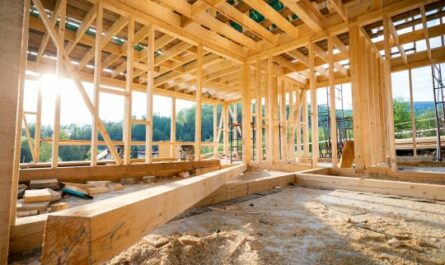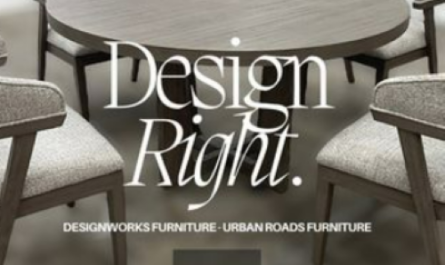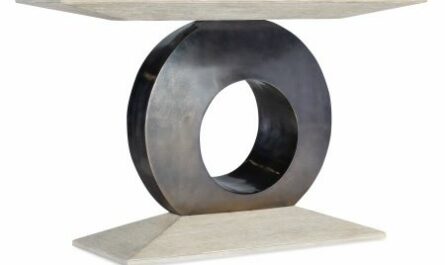VIENNA — “We’re sending you back to the future, Marty!”
My name isn’t Marty, but now I can say that I’ve been to the future. And I want to go back.
Upon hearing about Seestadt here in Vienna, I knew I had to see it for myself. One of the world’s largest social housing developments, Seestadt is part of Vienna’s drive toward carbon neutrality by year 2040 while continuing to grow in population. Seestadt sits on 800 acres that once served as the Aspern airfield.
Translating as Lake City, the Seestadt urban development project is a laboratory for testing “smart” living concepts, community-level sustainability efforts, and pedestrian-first city planning. Because cars are fewer, further and far less likely to be individually owned, Doc Brown was partially right: “Roads? Where we’re going, we don’t need roads.” Seestadt has surprisingly few roadways, with most of them on the perimeter, while car parks are pushed to the outer limits of the city to make room for walkways, parks, squares and open-air facilities.
And monthly rents can run as low as $600.

The reasonable rents are explained by having a landlord that isn’t motivated by profit or pressured by investors. That landlord is the city of Vienna, Austria’s largest landlord, which precludes land or property speculation. Supporting the project is a 1% tax on all salaries for new construction, a tax that has a history of more than 100 years. Permanently affordable housing is part of Vienna’s DNA.
Seestadt puts on rather impressive display that affordable housing can be accomplished without sacrificing quality of life and absent even the stigma that the term “public housing” carries in most of the West. In fact, Vienna has been named the most livable city in the world by The Economist magazine five times even though 60% of its residents live in some form of social housing, according to Eugene Quinn, an expat urbanist who has developed 60 different walking tours of the city.
Quinn said he believes that walkability is a huge component of a city’s livability.
“Vienna is thought about as this classical, walkable, chocolate cake city,” he said, “but it’s also home to the future. Seestadt is one of the smartest cities in the world.”
Quinn defined “smart” as collecting, understanding, then applying data, including geographic information system data. To define “social housing,” he said it begins with allowing the government to be the center of your life “in ways that aren’t true or customary in the United States.”
The honor system
For Quinn, among walkability’s benefits for a community is trust, and trust is at the heart of civic life in Vienna. It’s one of the bedrock values that most surprises visitors from the U.S., and it explains the city’s astonishingly low crime rate and conspicuous quietude. I’ve never been to a quieter city.
“Vienna has the best soundtrack in the world, but you can’t hear it,” Quinn said. He was referring to Mozart, Strauss, Beethoven, Schubert and so many others.

Trust also explains why there are no turnstiles at the city’s train stations, tram stops and bus stops; passengers are just expected to have paid their way. When random checks occur, which is roughly twice per calendar year, only 2% of riders are tagged for not having a pass or ticket, according to Quinn. Seestadt residents share cars and bikes and even power tools.
In community, trust is built when people are in contact with another and connected, when socioeconomic classes aren’t walled off from one another, and where private interests don’t own all the spaces. To make Seestadt pedestrian-first, there are planned, gradual transitions between public and private spaces, with semi-public spaces throughout. Laundry rooms are adjacent to playrooms, small parks and playgrounds are found around every corner, and inner courtyards (called “canyons”) erase social boundaries and class divisions.
Vienna has been “very intentional about identifying groups that need spaces and spaces that need groups,” Quinn said on a “Smart City” walking tour for my students here with me for a monthlong study abroad experience. “This is why a few of the city’s departments have offices in the national (soccer) stadium, which would otherwise sit empty almost the entire year.”
Red Vienna
Seestadt didn’t emerge out of Austria’s famously fresh air. During the “Red Vienna” period between 1918 and 1934, the country’s socialist government prioritized affordable housing for workers, taxes on luxuries and improvements in health care. Seestadt can be seen as a modern day elaboration of that priority on general or communal welfare over individual autonomy. In “old” Vienna, the city center is notable for its walkability, emphasis on public transportation and social interface. Unlike the vast majority of “new” planned communities, Seestadt offers those same “old” or historic city center amenities but in a thoroughly modern context.
Seestadt’s ratio for circulation is 40% public transit, 40% walking and cycling, and 20% for personal vehicles, and its infrastructure is built toward these goals.
I’m acutely aware that the terms “social housing,” socialist and “red” carry profound baggage for many Americans, with socialism having been weaponized by the hard right. I’m not advocating for socialism as that term is used in the United States, and neither is Austria. But, like the state assemblyman in California, Alex Lee, I am open to progressive solutions to what has become a rapidly growing housing crisis in America, a crisis that puts affordable housing out of reach for ever more numbers of would-be homeowners. Homeowners are, of course, furniture consumers.
The Social Housing Act
“I think more people are coming around to the idea that the current system of housing we have is fundamentally broken,” Lee told De Zeen. “The free market is working as intended today, where sky-high rent prices and housing prices are driving people away from their home communities.”
Chair of the California State Assembly’s select committee on social housing and chair of the committee on human services, Lee likes to cite Vienna as a model for addressing the affordable housing crisis. This February, Lee again proposed the Social Housing Act.
A huge barrier for Lee’s legislation and for public housing initiatives in America in general is the stigma attached to government interventions and, even more toxically, to “social housing.”
“I’ve seen a lot of times where Americans have a deep-seated stigma or mindset when it comes to public housing,” Lee told De Zeen. Then they see something like Seestadt, and “they typically change their mind.”
I’ve certainly been persuaded. After all, we don’t have a problem with our tax dollars going to libraries, public schools or social security, though we might very justifiably have issues with their administration and implementation.

But politics isn’t at all the theme here. Architect and author Walter Jaegerhaus wrote that “experimentation and innovation are in short supply today. Bitterly fought battles between the defenders of single-family homes and those who want most of us to live in ever-shrinking apartments off long, multistory corridors make people believe in a zero-sum game for finite resources. What’s missing is a new creative spark that can elevate the discussion to a level where everybody can see themselves winning.”
My safari to Seestadt to see social housing in its very natural habitat was intended to be inspired, to glimpse the future of the home and to rethink how we do “life” and “living.” We need more “winners,” because winners buy more furniture and, more importantly, because it is good and right and true to “love thy neighbor as thyself.”





